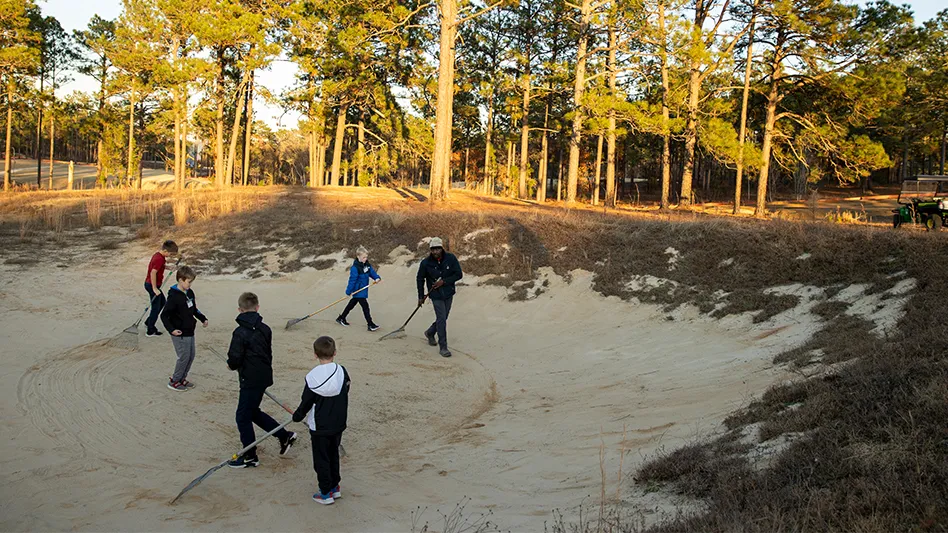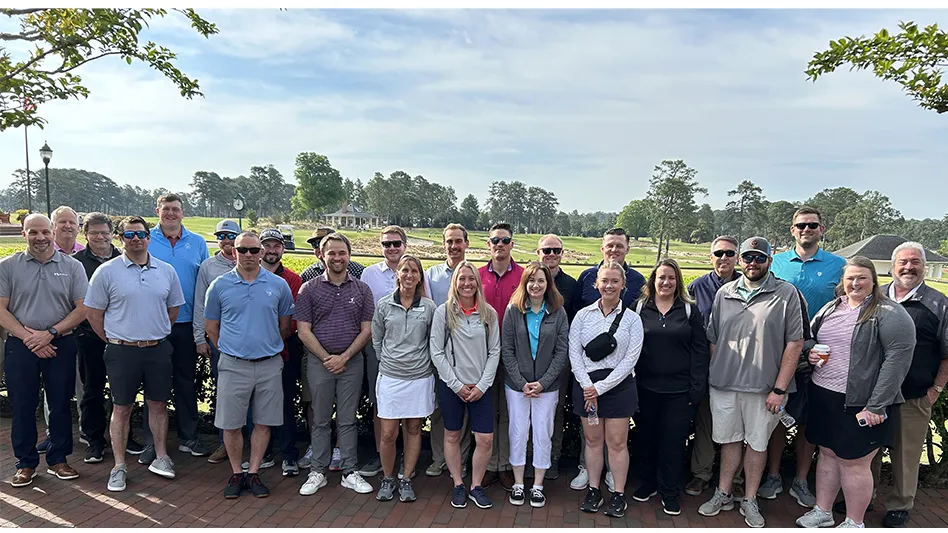
At some courses they’re known as “pandemic players.” They’re the ones who found their way to a golf course during the pandemic when there was nowhere else to go and because courses were considered safe havens in the face of a ravaging virus. Pandemic players are easy to spot. They’re driving golf cars aimlessly through the parking lot trying to find their way to the range; they’re taking a basket of practice balls to the practice putting green.
It’s easy for golf traditionalists to look down their aristocratic noses at these players. But what we should be saying is this: Bless their hearts and keep ’em coming. They hold at least part of the solution to golf’s continued growth in their still-uncalloused hands.
Golf enjoyed another banner year in 2021. Despite virus-related spring shutdowns that affected half the nation’s courses in 2020, the National Golf Foundation predicted that once the final numbers are tallied, rounds played in 2021 will be up 4 to 5 percent compared to 2020, an incremental gain of 20 to 25 million rounds. This is in defiance of some pre-2021 forecasts from industry experts who hoped to hang on to half of the previous year’s increase. It’s also important to note that rounds played are up 18 to 19 percent over the three-year, pre-pandemic average of 2017, ’18 and ’19, according to NGF.
A surprisingly strong 2021 had a lot to do with the same factors that led to 2020’s resurgence:
- Flexible work schedules that allowed many people to slip away for a round of golf when they would normally be staring into a computer screen
- Weather that was nice to great in many parts of the country
- A lot of pandemic players hanging in there, still looking a little lost, but still sufficiently intrigued, maybe even hooked
There are plenty of reasons to be overjoyed about a second straight year of feel-good results, not the least of which is that so many in the golf business had struggled just to keep the lights on for so long. But once you peel back the explanation for the chart-topping results, there also are reasons not to get all giddy. As NGF president and CEO Joe Beditz pointed out, “The main reason rounds are going to finish up is that March (+40%) and April (+80%) crushed it relative to the previous year,” when thousands of courses shut down during the height of the early pandemic.
Which brings us to a conclusion we’ve reached before and one that Beditz states bluntly: “Long-term growth depends on more golfers, not a virus or more rounds from current golfers, which is what has driven our recent growth.”
All of which begs the question we all should be asking ourselves as the new year unfolds: How do we make sure those pandemic players — and others — give golf a try and keep coming back?
The answers are not by trying to make the game a less expensive or time-consuming experience. After years of disdaining increases for fear of losing members and customers, a lot of courses are finally making well-deserved increases in their fees and prices. And with tee sheets at capacity in some places, and with courses populated with so many players new to the game, pace of play is probably not going to improve much, despite ongoing efforts.
So, what’s left to improve retention and conversion rates? How about trying some love?
“For years, the research has said — above all else — that getting someone to feel accepted, comfortable and confident makes the biggest difference in whether they stay or go,” says David Lorentz, NGF’s chief research officer.
In other words, treat me nice, show me some respect, thank me for my business and I’ll pay your jacked-up initiation fees and green fees and put up with 4-hour, 45-minute rounds. We’re all aware of the never-ending task list at most courses and the difficulty hiring and keeping staff, but here are a few love-inspired ideas to attract and engage golfers new to the game and to your course:
- Help them feel welcome. Ask your IT folks if your tee time booking program can identify first-time players when they reserve their tee time. And ask your folks in the shop to ask one more question when they’re reserving a time for a guest or checking in: Will this be your first time playing here? Those players should get a little special attention. Call them by name and thank them for their business. Tell them the starter’s name and how to get to the range.
- Get out on the course. It’s tough to find time to pull away from your desk, to leave the shop or even to get out of your utility vehicle for a few minutes. But golfers love it when a GM, head professional or superintendent pulls up beside their group and asks how their round is going and if there’s anything they need to make their day more enjoyable.
- Flip someone a ball you found in the rough. (Just make sure it’s still playable!)
- The game is difficult — help make it a little easier. Could one of your professionals spare a half hour once a day to chat it up with the folks on the range while dishing out a quick tip or two? Think about promoting a free clinic one morning or afternoon a week for newbies. You could also invite manufacturers’ reps to set up on the range for a few hours for fittings — and for sales.
- Take an interest. Learn which teams your members and regulars root for and the names of their kids. Ask how they’re doing.
- Add a few more rakes. It’s an easy way to lower the frustration level.
- Keep them informed. Is a big group outing coming up that’s going to take over most of the course? Send an email, post the event details on the website and put a sign on the counter in the pro shop. No one likes to learn at the last minute that the only tee times next Friday are at 7:21 a.m.
- Sit down for a Coke or cup of joe. Once a week, wander into the grill area, ask if you can join a group of players and offer to buy them a beverage. Then take the opportunity to ask about things you could be doing differently to improve their club and course experience.
- Recognize a good shot. It’s a nice practice when the maintenance crew stops work while a golfer prepares to hit a shot. And whenever that shot turns out to be a good one, give the player a big thumbs up, Arnie style.
- Smile. It’s cheap and it doesn’t take much effort.

Explore the February 2022 Issue
Check out more from this issue and find you next story to read.
Latest from Golf Course Industry
- USGA opens Golf House Pinehurst
- Bernhard Academy expands leadership team
- Another record year for research
- The Highlands pays more homage to Ross
- Audubon International adds veteran superintendent to leadership team
- South Florida simmer
- Devising safer landings
- SiteOne adds Durentis to product offerings





